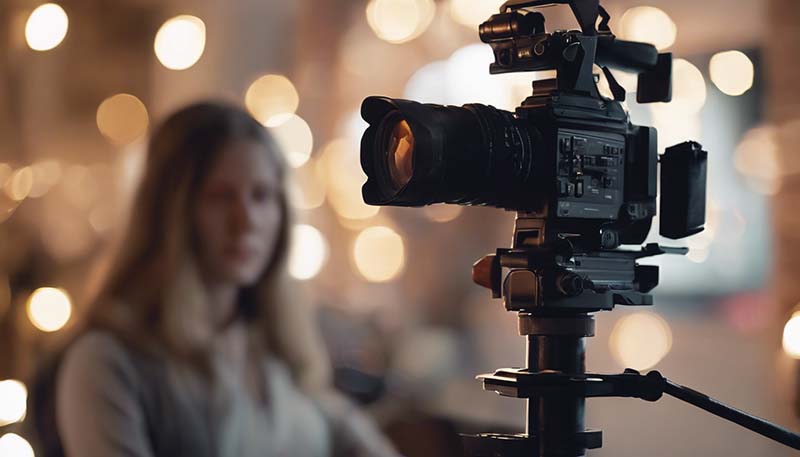The Art of Editing: A Look at How Filmmakers Shape the Narrative
The Art of Editing: A Look at How Filmmakers Shape the Narrative
Film editing is an invisible art, often overlooked by audiences but crucial to the storytelling process. It's the editor's job to take the raw footage captured during production and transform it into a coherent, engaging story that resonates with viewers. This article delves into the art of editing, exploring how filmmakers use this critical process to shape the narrative, build tension, develop characters, and convey emotion.
Understanding the Role of the Editor
Editors are the unsung heroes of filmmaking. They work closely with directors to ensure that the final cut of a film aligns with the creative vision. The role of the editor is multifaceted, involving not just technical skills but also a deep understanding of story structure, pacing, and character development.
Key Responsibilities of an Editor
- Storytelling: Editors help to tell the story by selecting the right shots and arranging them in a sequence that makes sense and engages the audience.
- Rhythm and Pacing: They control the film's tempo by deciding how long to hold on a shot or how quickly to cut between shots.
- Performance: Editors work to highlight the best performances from actors, sometimes using different takes to piece together the most compelling scenes.
- Cutting for Emotion: They manipulate the viewer's emotional response by deciding when to reveal or withhold information.
- Music and Sound: Editors work in tandem with sound editors and composers to ensure that the audio elements enhance the visual narrative.
The Evolution of Film Editing
Film editing has evolved significantly since the early days of cinema. Early films were simple, with a single camera capturing an unbroken view of a scene. It wasn't until the 20th century that filmmakers like D.W. Griffith and Sergei Eisenstein began experimenting with editing techniques that would forever change the way stories were told on screen.
Advertisement
Early Techniques
Griffith's use of cross-cutting in films like "The Birth of a Nation" (1915) allowed for parallel action to unfold simultaneously, heightening tension and drama. Eisenstein's "Battleship Potemkin" (1925) utilized a series of quickly cut images, known as a montage, to convey complex ideas and emotions.
These early experiments laid the groundwork for modern editing techniques, which would continue to evolve with technological advancements.
Contemporary Editing Techniques
Today's editors have a vast array of tools at their disposal, from digital nonlinear editing systems to advanced visual effects software. Here are some of the techniques that are commonly used:
Jump Cuts
A jump cut is a cut where the action appears to jump forward in time, often used for comedic effect or to create a sense of unease.
Match Cuts
Match cuts are used to smoothly transition from one scene to another by matching the action or subject matter of the outgoing and incoming shots.
Cross-cutting
Cross-cutting involves switching back and forth between two or more lines of action, building tension and creating a parallel between the scenes.
Nonlinear Narratives
Some films, like "Pulp Fiction" (1994) or "Memento" (2000), use a nonlinear narrative structure, where the editor plays a key role in disorienting the audience before revealing the true chronology of events.
The Impact of Editing on Narrative
Editing is a powerful tool that can significantly impact how a story is perceived by the audience. Here's how:
Character Development
By choosing which takes to use and how to cut between characters, editors can reveal insights into a character's personality, motivations, and emotional state.
Tone and Mood
The pacing and rhythm set by the editor can establish the tone and mood of a film, whether it's a high-octane action sequence, a somber reflection, or a moment of suspense.
Visual Storytelling
Editors use visual cues to guide the audience through the narrative, ensuring that key details are highlighted and that the story unfolds in a logical and engaging manner.

Famous Film Editors and Their Impact
Some film editors have become renowned for their craft, leaving an indelible mark on the films they've worked on:
Walter Murch
Walter Murch is a pioneer in film sound design and editing, known for his work on "The Godfather" (1972) and "Apocalypse Now" (1979). Murch's innovative approach to sound editing, which he calls "sound montage," has influenced generations of filmmakers.
Thelma Schoonmaker
Thelma Schoonmaker, Martin Scorsese's longtime collaborator, has edited many of his most notable films, including "Raging Bull" (1980) and "Goodfellas" (1990). Schoonmaker's work is characterized by its energetic pacing and seamless integration of music and sound design.
Sally Menke
Sally Menke, who worked closely with Quentin Tarantino, was known for her ability to handle complex, dialogue-heavy scripts. Her editing in films like "Reservoir Dogs" (1992) and "Pulp Fiction" (1994) contributed significantly to their distinct style and success.
Conclusion
The role of the film editor is integral to the storytelling process. Through careful selection, arrangement, and manipulation of shots, editors can shape the narrative, enhance performances, and evoke emotion. As technology continues to evolve, so too will the techniques and possibilities available to editors, ensuring that the art of editing remains a dynamic and essential aspect of filmmaking.